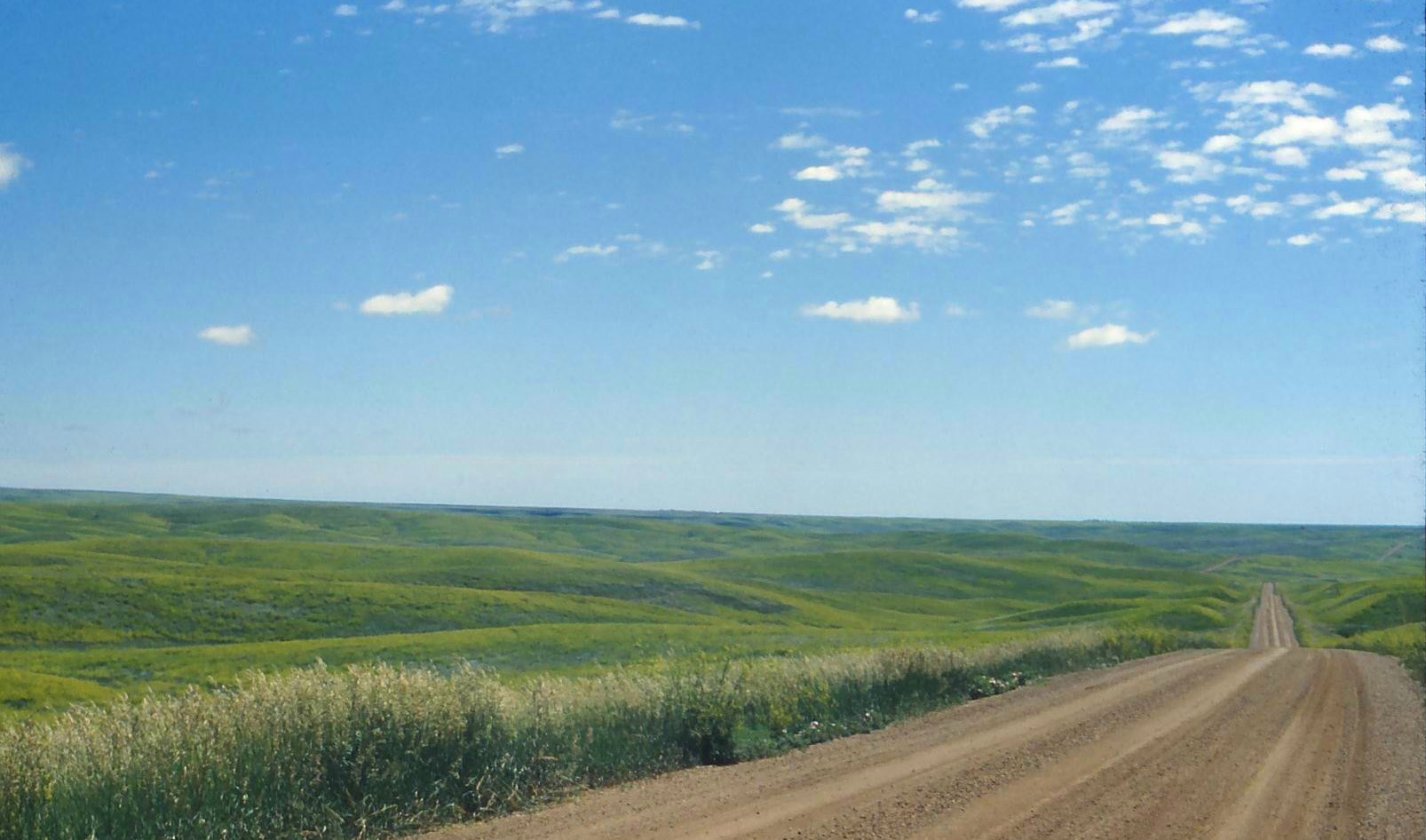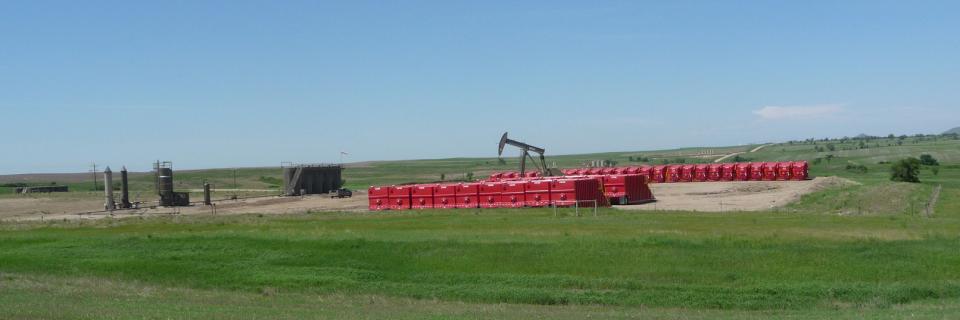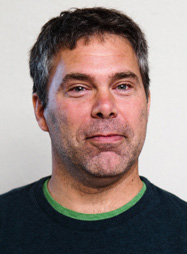People in exile are experts on roots and energy. They know how much energy is needed to extract roots, how much energy is needed to stay uprooted, and, because a state of uprootedness is unsustainable over the long run, how much to sink roots deep into the ground again.
I remember standing in North Dakota and looking toward the horizon. One can actually see Earth as a globe - the slight curve of the horizon, where the winds come from that bend the grass and the few trees, and where the clouds gather that sweep overhead, only to disappear again and make way for the blue sky. Sometimes, looking toward the horizon, I would feel an overwhelming joy, seeing mountains in the distance. It was usually a short emotion, as I realized that my mind had played tricks. Those were not mountains, could not be mountains. They were clouds that had swept me away toward home, mirroring a more familiar landscape.
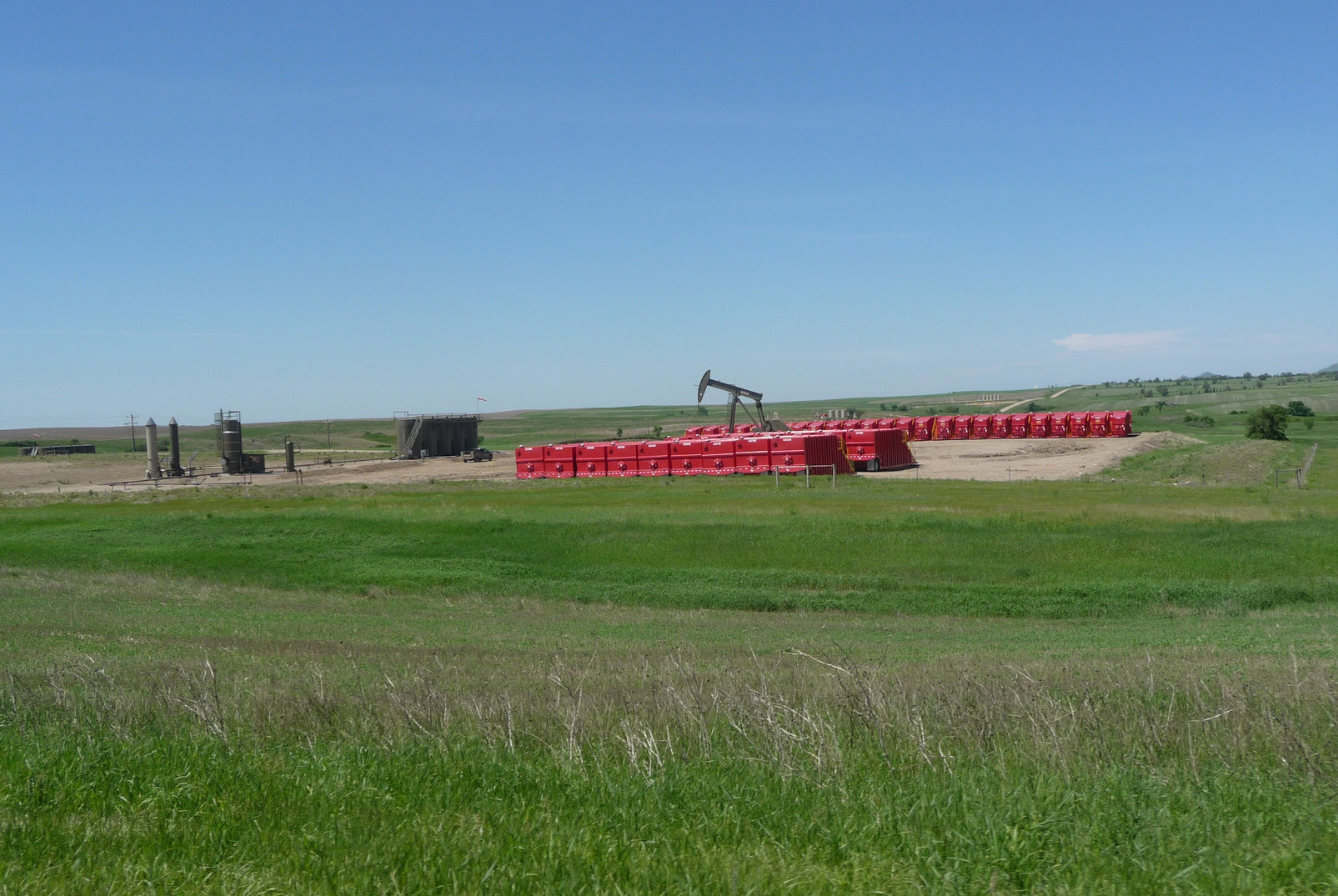
All photos courtesy Sebastian Braun
Living on the Great Plains costs a lot of energy. The sky overhead is endless, and the people are exposed to that sky as if on a plate. Shelter becomes more than a physical necessity. Humility in the face of this force is self-imposing and sometimes overpowering. There is a connection between people and nature, because everybody is exposed to forces that cannot be tamed or understood. At least, that is, until people started to surround themselves with constant shelter, as if to avoid having to look into that sky, to acknowledge the force, to be humble. Instead, they could now disconnect themselves from nature, think of themselves as superior, and think of distance in miles per hour, hurtling themselves quicker and quicker through the landscape they no longer needed to acknowledge, ripping up all their roots, at least the long, deep, strong roots that hold the grasses in place against the winds. Instead, they now plowed the earth and selected what roots were allowed to grow. And all of this cost even more energy because to be without roots requires one to levitate in place, nothing but a fleeting shadow over the land, which has become but an abstraction, no longer real because it is just land. There is no distinct smell of the earth, no change in winds that herald rain, no experience of seasonality, no need to observe closely how its other inhabitants behave, no sharing of the landscape with them. Kinship and its obligations have been narrowed to the people in the shelter, and has been turned against those outside the shelter. And so, with the extraction of roots comes the need to extract more and more energy.
Energy has become visualized for me in the form of long trains of black tank cars and coal tenders moving across the plains. When we lived in North Dakota, they were parked right next to the campus of the university where I taught, and I often wondered what would happen if the oil wagons exploded like they had done in Lac Megantique and right outside Casselton. Now that I live in Iowa, the same wagons rumble by our house about five times a week. Here, they are loaded with ethanol, not oil or coal, but the image of energy being transported to markets is the same. The Prairie-Plains are the heart that sends fuel to the outliers. It is a restless procession of long trains, traveling through places that try to still be rooted, yet are more and more depopulated. People and grass have been uprooted and swept away, and even those who have stayed behind need heavy machinery to anchor them down, now that the roots are mostly gone and the shelterbelts are disappearing.
There are other ways that the energy flows, of course. Pipelines cross the Plains like a vast network of pulsating arteries. Not veins, however, as there is not much coming back. Invisible, those lines are connected to the new artificial roots of hydraulic fracturing. These roots fan out from wells, which draw different nutrients out of the Earth, nutrients for the industrialized society. However, just like the roots of water-hungry plants, these new kinds of roots are also thirsty. They are thirsty for poisonous nutrients—oil and gas—that they extract, but they also put poisons into the Earth. Toxic materials are mixed into the water that is used for fracturing the rocks, and fracturing wells are extremely thirsty. In 2016, a well in the Bakken oil field required 5.5 million gallons of water, while one in the Permian basin used 11.2 million gallons of water. In August of 2018, the Bakken had 12,571 producing oil wells. Some of this “water”, too, will flow back out. This is now called produced water, but it really has not much in common anymore with water. It is about twenty times saltier than ocean water, slightly radioactive, and highly toxic. Apart from its use in the artificial roots of hydraulic fracturing, it can not be allowed to ever come into contact with other roots. This brine needs to be disposed of, hopefully for ever, and it is usually injected back into the Earth. In the United States, about 180,000 Class II injection wells pump over 2 billion gallons of fluids into the Earth every day, most of them in the southern Plains. What happens when these fluids are not injected deep enough or break free from their layers can be seen on the Fort Peck Indian Reservation in Montana. Here, an underground brine plume has been migrating slowly through water wells for the past 40 years, a legacy of injection practices in the 1970s. Slowly spreading toward Poplar and the Missouri River, the only solution for this catastrophe has been to try and pump it to the surface again, and then to inject it deeper.
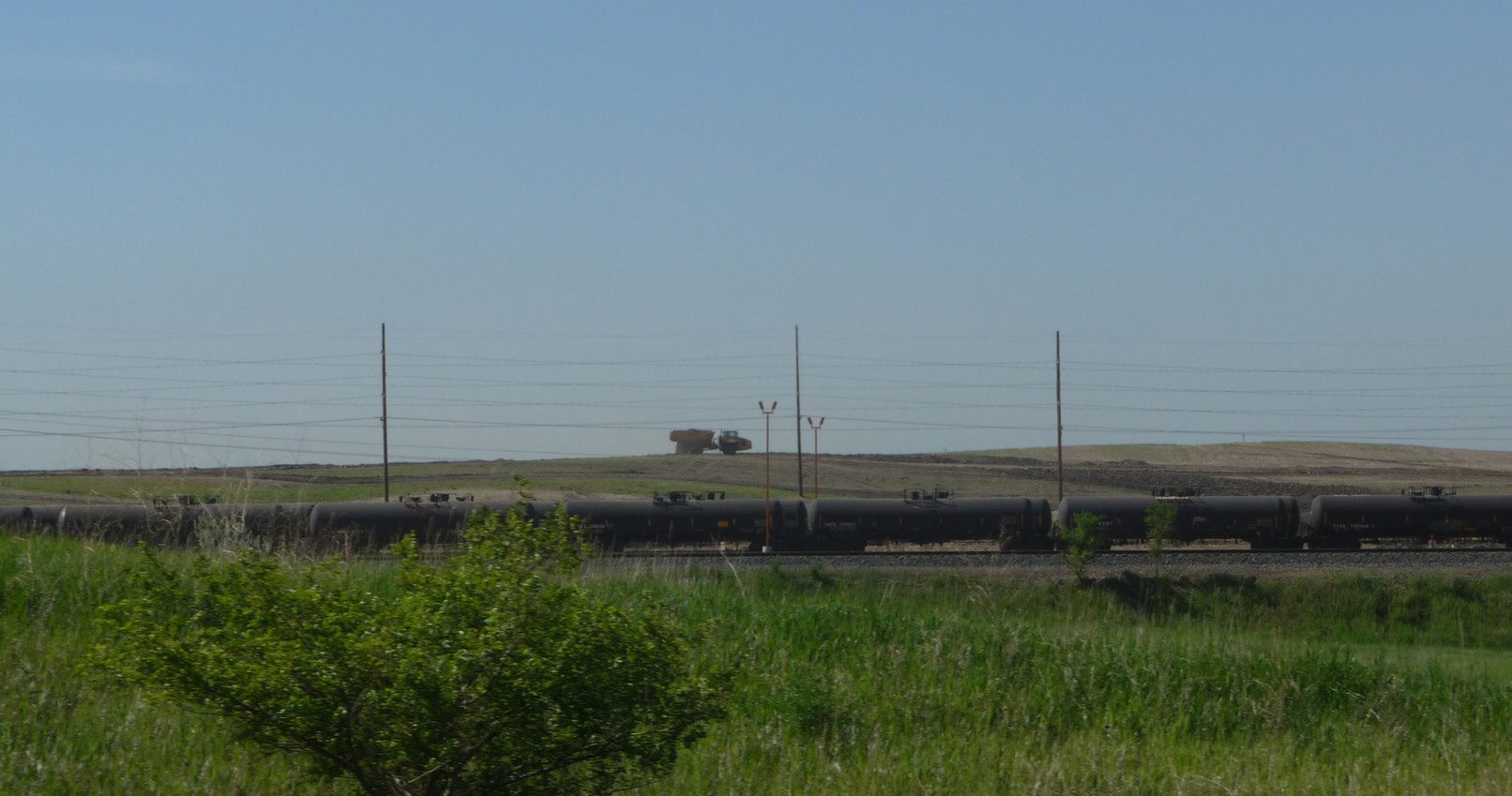
The pulse of this network has become constant beneath the soil, and in some places, it has become so strong that it regularly causes small earthquakes. Whether or not these pulses will eventually set the liquids free is a matter of debate that will only be shown by time. If, however, any of the produced waters make their way to the grass roots, people, plants, and animals will have to leave. Under the ground sleeps the greatest danger to communities. It might be a telling sign that a break in a produced water pipeline is much more impactful than a break in an oil pipeline.
The Prairie-Plains have become the roots for the United States, where wheat, oil, soybeans, corn, and coal are extracted from the soil to feed the cities far away. Not much thought is spent on the roots. They are often regarded as boring and colorless and are taken for granted. Eighty years ago, during the Dust Bowl, the nation did come to realize that it had better pay attention to the roots when the topsoil was flying away. One of the best kept secrets of the Plains lies in Denbigh, North Dakota, an assembly of houses off the main road to Minot. Across that road stands the Denbigh Experimental Forest. At first, it might come as a surprise that the ground in the forest is mostly sand. This sand is not the leftover of a prehistoric beach or long-ago glacier, but the result of much more recent overgrazing and over-plowing. In fact, the forest was planted as a grand plan to save the soil. It was one part of the national response to the destruction of the plains grass-, range-, and farmlands. The original plan called for planting a series of 100 mile long shelterbelts, a mile apart, over more than a thousand miles from North Dakota to Texas. While this plan was eventually given up, between 1935 and 1942, the Forest Service planted 220 million trees in the Plains. Denbigh was to be one of the nurseries for these trees. Standing in the midst of these trees in the middle of nowhere, a tree island in a sea of industrialized agriculture, I found it hard not to think of the imagined and real root systems holding the soil and people in place and to compare it to the oil boom ongoing a hundred miles further west. There are no Denbigh forests, no designed areas of seeds to fan out and protect the land against this new kind of industrialized havoc.
The Denbigh trees were and still are an illustration of the possibilities to make roots. Like plants, animals and people can become rooted in a place. Humans do that by establishing a relationship with a place: by listening to the landscape and its inhabitants. The stories that we learn and share in this process are our roots, they hold us to the places we engage with. It is hard to say how long it takes to become rooted. A few generations is my guess. Once we know the stories of all the places around, above, and below us, we are rooted. By that time, we are also rooted in the ground because our ancestors have related to the same places. Rooted knowing is not knowledge formally learned, but sensually experienced. It is the knowledge of how the dirt smells and feels and tastes after a rainstorm. It is the ability to find one’s way through the landscape of stories. It is the skill to predict the weather by looking out the window and to estimate distances by how long it takes to walk along the contours of the land. And it is to understand that that we humans are just one of the parts in any place that we live, to be humble before greater forces with great and small powers. The energy of place is tied to roots, but those are the roots of community, not extraction.
When I was younger, I used to mountain bike on the mountain behind the house where I lived in Switzerland. There is a place there where the trees give way to a cliff, and there I can experience my home. Looking out over the Sundgau, I can see the Belchendreieck, the mythical triangle of mountains in the Vosges, the Black Forest, and the Jura that served as an astronomical calendar and a place power grid to the people before me. Looking west and north, there are possibilities of openness, promises of adventure, and winds of chance. I always longed to know what lay beyond the next ridge. The Plains, although topographically the opposite of my home in Switzerland, remind me of it, possibly because they offer an endless opportunity to go farther, a constant draw toward the horizon. Perhaps that is why I fell in love with the Plains the first time I traveled them.
Few things are better than lying awake at night in a tent, smelling the sage, and watching the thunderstorms on the horizon parade by. Some people tell me that there is nothing on the Plains, that it is fly-over and drive-through country. They have never taken the dirt tracks to watch pelicans on remote lakes, have never gotten stuck in Plains gumbo, have never observed ground squirrels playing around their tent. These days, I too hurry through the Plains to get places, and sometimes I feel a pain for passing by all the places that I know lie right over the hills, in beautiful valleys, away from the interstates and the industrial fields. There is nothing as depressing as a flattened, brown, industrialized, ploughed landscape devoid of roots. There is nothing as beautiful as a wide river valley with a sprinkling of savannah trees. To allow and make people see this beauty, we need to open the land to the public, to allow people onto the land, not in small, enclosed parcels, but in continuous flows, traveled in days, experienced close at hand. Observed, listened to, smelled, and tasted.
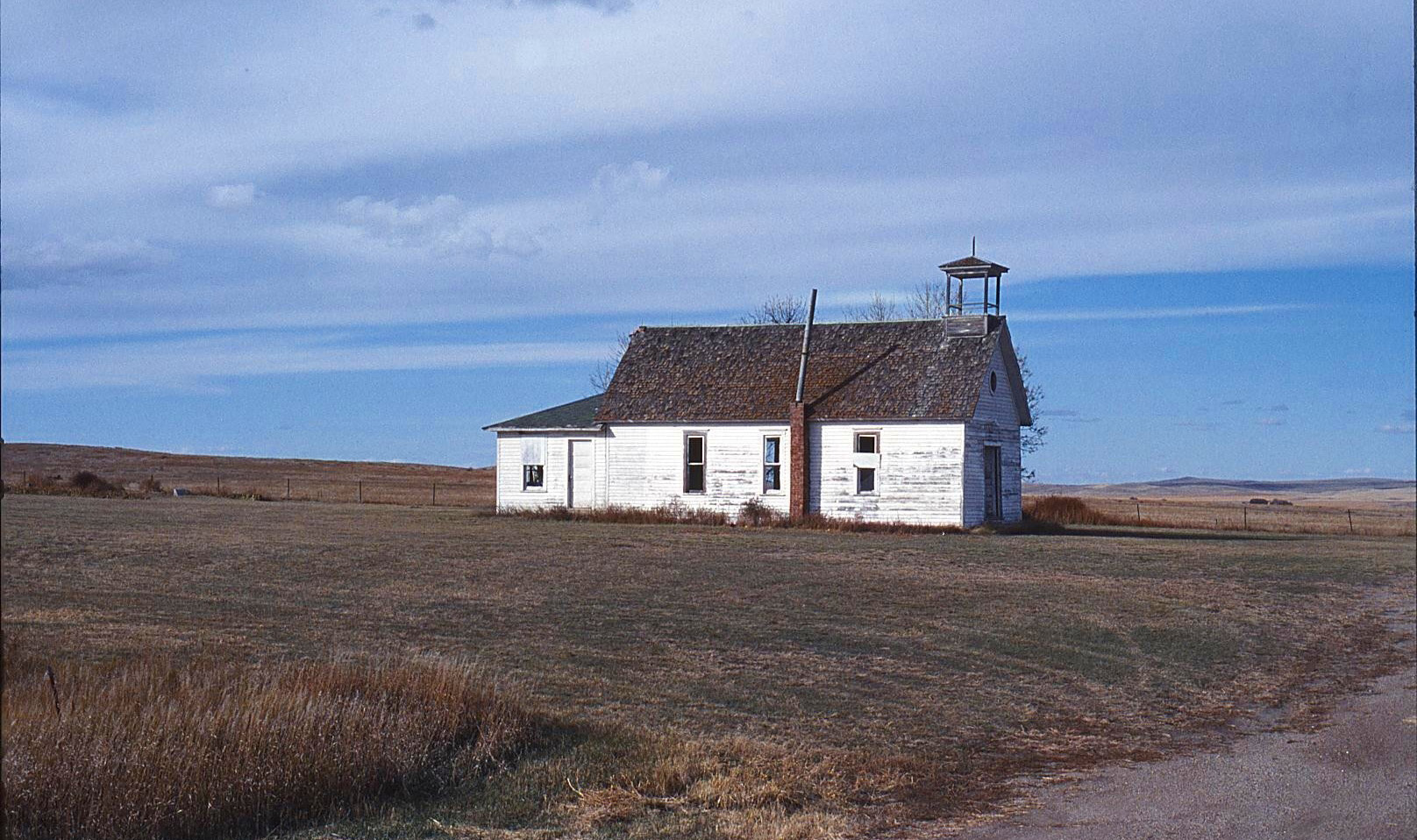
Ironically—or perhaps not at all—those landscapes would also provide us with material energy. The energy returned over energy invested ratio for all those wagons full of corn ethanol that roll behind my house is lousy and unsustainable. Instead of plowing up the Native roots and replacing them every year with corn to provide to pigs and to distill into ethanol, the best use of this landscape would be to turn it back into switchgrass prairie. Ethanol production from switchgrass is about 5 to 6 times more efficient than ethanol production from corn. And while currently the research is directed at switchgrass monocultures, a true prairie flora could probably be used for the purpose, too. A green economy for Iowa would see the restoration of switchgrass prairies and the harvest of the grass for ethanol production. That would also allow the restoration of roots to the land and a diverse plant and animal habitat. Sustainably planted islands of edible corn in this prairie instead of diminutive islands of prairie in a desert of corn and soybeans would still produce food. In the coming years, agriculture, just like everything else, will need to adjust to massive changes in climate and in energy use. We all need to re-learn to live with the land instead of against it. We will all need to re-learn the value of roots and how to maintain them.
I am not advocating for a return to pre-industrial life; wind power generation will have to be a part of the solution on the Plains and Prairies. Wind turbines are rooted like prairie grasses and like the farmers who take care of the land. Instead of clearing the land of its roots, however, and watch people, native plants, animals, and everything else be swept away from it in the name of industry, we should emphasize this caretaking function of farming. In order to see prairie caretaking as farming, we need to redefine the meaning of the term, farming. But farming as caretaking of the landscape instead of industrial extraction of resources would restore the powers of roots and enable those same roots to care for people. Instead of seeing that as a threat to farmers, I see it as a restoration of the true meaning of farming. Until industrialization, farming did not mean to rip out roots, but planting roots and at the same time taking care of existing root systems, nurturing the land for plants, animals, and communities.
Ironically, people in exile are experts on roots. What we have learned
is that roots cannot be forced. Roots need to grow naturally. If we
allow them to grow, over time, patiently, listening and observing and
learning, then we will be able to harvest their true energy.
